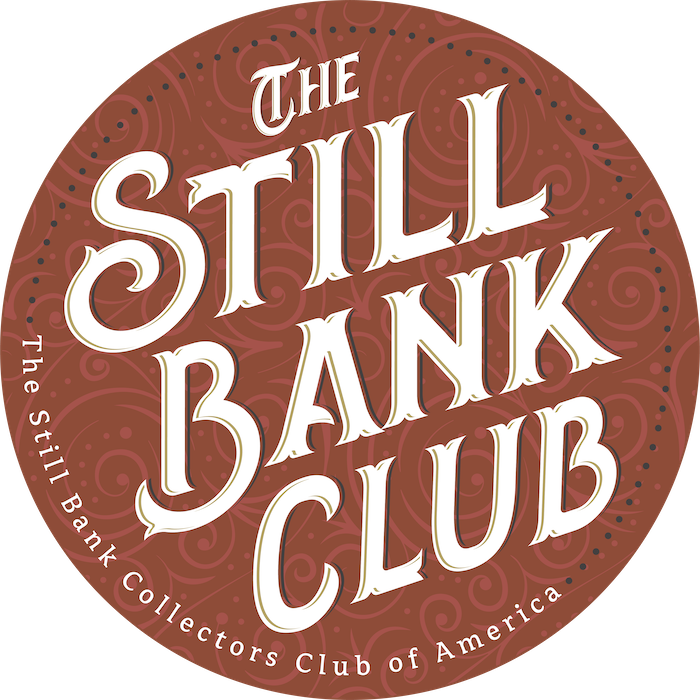Still Banks of Comic Strip Characters
Published in the April 2023 Penny Bank Post | Written by Gary Ferguson
Comic strips became popular at the turn of the 20th century, arising from the great newspaper rivalry between newspaper publishers William Hearst and Joseph Pulitzer, giants of the newspaper industry. The Yellow Kid, created by Richard Outcault, is generally recognized as the first true comic strip, first appearing in Pulitzer’s New York World in 1895. Katzenjammer Kids, created by cartoonist Rudolph Dirks, appeared in Hearst’s competing New York Evening Journal in 1897. William Hearst eventually became king of the comic strips, with his newspapers having the largest circulation of strips in the United States. Hearst is credited with introducing the nation’s first full daily comic page in the New York Evening Journal in 1912.
Comic strips eventually evolved into two formats: daily horizontal comic strips printed in black and white which ran from Monday through Saturday, and the Sunday “funny pages” printed in color with longer sequences. The Sunday comics were generally presented at the front of the Sunday newspaper edition. Comic strips became highly prized by newspaper publishers as evident by a 1931 Gallup poll that revealed the comic section as the most important part of the newspaper. Comic strips sold newspapers.
The middle part of the 20th century was considered the golden age of the newspaper comic strips. Dick Tracy, Brenda Starr, Gasoline Alley, Peanuts, Beetle Bailey, Blondie, Garfield, and Dennis the Menace were just a few of the popular comic strips published during this time period. The first comic books were actually reprints of the daily and Sunday comic strips.
The popularity of comic strips led to the manufacturing of still banks depicting comic strip characters of the day. In this article, I have focused on characters introduced in the early 20th century through the world of comic strips. I have not included characters who were first introduced through other media such as short movie clips or comic books; such as the well-known Disney, Warner Bros., and Marvel characters.
Foxy Grandpa
Foxy Grandpa was created by cartoonist Carl Schultze and first ran in the New York Herald in 1900. William Hearst later hired Schultze for more money and the strip moved to the New York American in 1902 and continued until 1918. Foxy Grandpa was an elderly man with two mischievous grandsons, Chub and Bunt. The grandsons were constantly trying to trick the old man, but Foxy Grandpa always managed to get the better of the two boys by turning the tables on them with his wit and remarkable acrobatic skills.
Foxy Grandpa first appeared as a still bank produced by the Wing Mfg. Co. at the turn of the 20th century and was listed as the "Grandpa Bank". He wears a suit and tie with a bowler cap. This early bank used a turn pin.
Foxy Grandpa by Wing Mfg. Co. with Turn Pin
Wing was sold to National Novelty Co. in 1904 and moved to Kenton, Ohio, where it became part of Kenton Hardware, the manufacturing branch of National Novelty Company. Foxy Grandpa later appeared in Hubley catalogs in the 1920's with the turn pin replaced by a screw. Both the Wing and Hubley banks are rated "C" in the Moore book.
Foxy Grandpa by Hubley with Screw
Happy Hooligan
Happy Hooligan was created by cartoonist Frederick Burr Opper in 1900 for the William Hearst newspapers. The popular strip was the first major strip for Opper and ended in 1932 due to his failing eyesight. Happy Hooligan was a good-natured hobo who encountered a lot of setbacks and misfortunes but still maintained a cheerful outlook. His likewise impoverished brothers, the sour Gloomy Gus and the snobbish Montmorency, did not share his positive outlook.
The still bank of Happy Hooligan is a ceramic glazed pottery bank. He is wearing a hat and oversized coat with a patch on the back. Happy Hooligan was produced in the 1920s in both green and yellow porcelain. The bank is rated a "2" in the Moore book.
Billy Bounce
Billy Bounce was a comic strip created in 1901 by W. W. Denslow. C. W. Kahles continued the comic strip . . .



